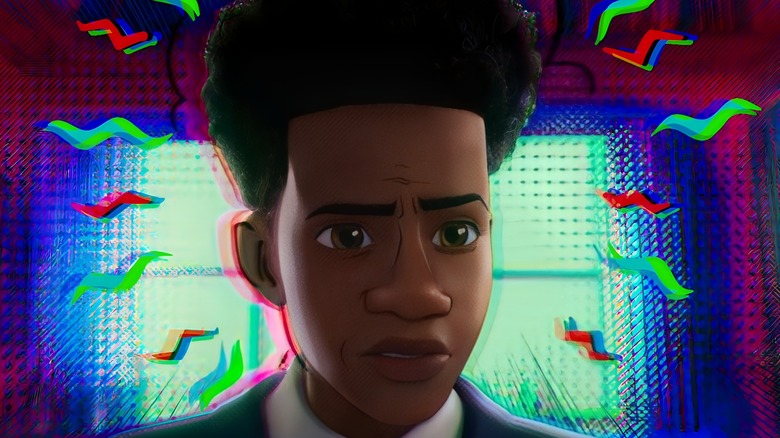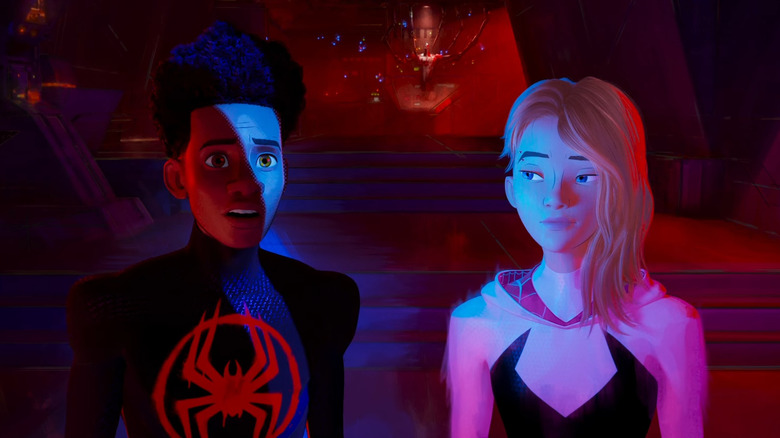How Spider-Man: Across The Spider-Verse Creates A Huge Marvel First
Contains spoilers for "Spider-Man: Across the Spider-Verse"
"Spider-Man: Across the Spider-Verse" is arguably one of the most ambitious superhero movies of all time. The first film introduced audiences to Miles Morales and a handful of other Spider-People to help guide him on his journey to come into his own with his great new powers. The sequel ups the ante by sending Miles into alternate universes, including a central hub filled with hundreds of different Spider-Folks. Entirely new worlds get created, often with a unique art style to go along with it, and the film ends by sending Miles to arguably the scariest universe of all.
Due to a mishap with the Go Home Machine, Miles isn't sent back to his own reality at the end of "Across the Spider-Verse." He gets sent to the reality where the spider that bit him originated — Earth-42 — which doesn't have its own Spider-Man. The number 42 appears repeatedly throughout the movie (and holds special significance), but it's most noteworthy because it hasn't officially existed in Marvel canon up until this point. Other universes are sly references, such as Gwen Stacy's original universe being Earth-65, which is the home of Spider-Gwen in the comics and also references Gwen Stacy's first appearance ever occurring in 1965.
"Across the Spider-Verse" doesn't merely pay homage to what's come before. It paves a new path and creates its own mythology within Marvel.
Marvel now has an Earth-42 to go along with DC's
Earth-42 has never existed in Marvel Comics. It's probably always been there, seeing how in a multiverse, anything is possible, but audiences finally get to see what's going on in a reality with no Spider-Man. Things aren't great, as New York is on fire when Miles arrives, and the version of him that resides in this universe has taken on the mantle of Prowler. It's a pretty bleak world, meaning it's literally the opposite of the initial Earth-42 that exists in DC Comics.
Created by Grant Morrison and Gene Ha, DC's Earth-42 was introduced as part of the New 52 run and is home to Lilliputian versions of the Justice League, which means they're all little kids. They spend their time frolicking in a world without death or violence until a Superdoomsday from another reality arrives and kills Superman and Batman, leading to startling revelations.
Marvel has had a Prison 42 in the comics, which was used during Civil War by Iron Man and Mister Fantastic to imprison heroes in the Negative Zone who didn't register their identities. It's unlikely that Earth-42 in "Across the Spider-Verse" is meant to reference that, although one could argue that Miles is imprisoned there as he's stuck there at the end of the movie, being held captive by the other Miles. Given the cliffhanger ending, it's obvious Earth-42 will factor into "Spider-Man: Beyond the Spider-Verse," so it isn't the last time viewers have seen this new world.
"Across the Spider-Verse" is playing in theaters now.

